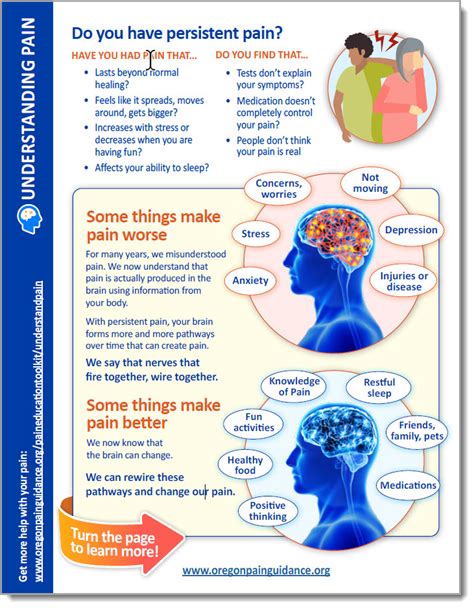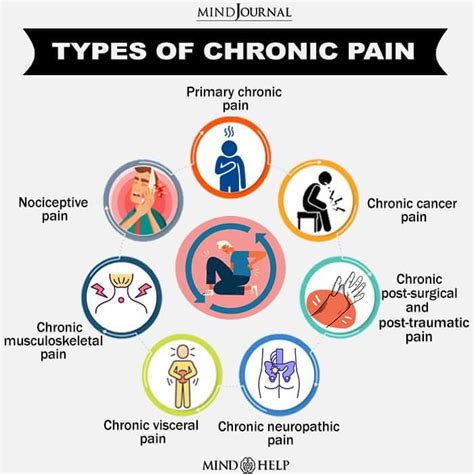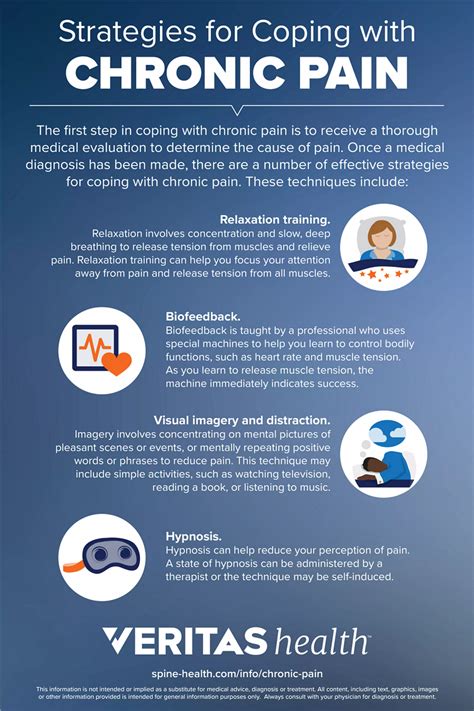Intro
Discover 5 facts about chronic pain, including its causes, symptoms, and management options, to better understand and cope with persistent pain, fibromyalgia, and neuropathic pain conditions.
Chronic pain is a complex and multifaceted condition that affects millions of people worldwide. It is a major cause of disability, distress, and decreased quality of life, with significant economic and social implications. Despite its prevalence and impact, chronic pain remains poorly understood, and many people struggle to find effective management and treatment options. In this article, we will delve into the world of chronic pain, exploring its causes, consequences, and potential solutions.
Chronic pain is a condition characterized by persistent and ongoing pain that lasts for more than three months. It can be caused by a variety of factors, including injury, infection, inflammation, and nerve damage. In some cases, chronic pain may be the result of an underlying medical condition, such as arthritis, fibromyalgia, or diabetes. However, in many cases, the cause of chronic pain remains unknown, making it challenging to develop effective treatment plans. The impact of chronic pain on daily life can be significant, affecting not only the individual but also their family, friends, and community.
The experience of chronic pain can be highly variable, with different people experiencing different types and intensities of pain. Some people may experience constant, nagging pain, while others may experience intermittent, severe pain. The emotional and psychological toll of chronic pain should not be underestimated, as it can lead to feelings of frustration, anxiety, and depression. Furthermore, chronic pain can also have significant economic implications, as it can limit a person's ability to work, engage in social activities, and participate in daily life.
Understanding Chronic Pain

Causes of Chronic Pain
Chronic pain can be caused by a variety of factors, including: * Injury or trauma * Infection or inflammation * Nerve damage or neuropathy * Underlying medical conditions, such as arthritis or diabetes * Poor posture or biomechanics * Stress and emotional factors It is essential to identify the underlying cause of chronic pain to develop effective treatment plans. In some cases, chronic pain may be the result of an underlying medical condition, and treating the underlying condition can help alleviate pain symptoms.Types of Chronic Pain

Consequences of Chronic Pain
Chronic pain can have significant consequences on daily life, including: * Decreased mobility and flexibility * Decreased strength and endurance * Decreased cognitive function and memory * Increased risk of depression and anxiety * Decreased quality of life and overall well-being Chronic pain can also have significant economic implications, as it can limit a person's ability to work, engage in social activities, and participate in daily life.Management and Treatment of Chronic Pain

Alternative Therapies for Chronic Pain
Alternative therapies can be effective in managing chronic pain, including: * Acupuncture: to stimulate healing and relaxation * Massage: to reduce muscle tension and promote relaxation * Mindfulness meditation: to reduce stress and promote relaxation * Yoga: to improve flexibility, strength, and balance * Herbal supplements: such as turmeric, ginger, and willow bark It is essential to consult with a healthcare provider before starting any alternative therapy, as some may interact with medications or have side effects.Living with Chronic Pain

Future Directions in Chronic Pain Research
Chronic pain research is ongoing, with new discoveries and advancements being made regularly. Some promising areas of research include: * Gene therapy: to identify genetic markers and develop targeted treatments * Stem cell therapy: to repair damaged tissues and promote healing * Brain-computer interfaces: to develop new treatments for chronic pain * Personalized medicine: to develop tailored treatment plans based on individual needs and circumstances It is essential to stay informed about the latest research and advancements in chronic pain management and treatment.Conclusion and Final Thoughts

We invite you to share your thoughts and experiences with chronic pain in the comments below. How have you managed your chronic pain, and what strategies have been most effective for you? Share your story and help raise awareness about this important topic.
What is chronic pain?
+Chronic pain is a condition characterized by persistent and ongoing pain that lasts for more than three months.
What are the causes of chronic pain?
+Chronic pain can be caused by a variety of factors, including injury, infection, inflammation, nerve damage, and underlying medical conditions.
How is chronic pain managed and treated?
+Chronic pain is managed and treated with a multidisciplinary approach, involving medical, psychological, and lifestyle interventions, such as medications, physical therapy, cognitive-behavioral therapy, and alternative therapies.
